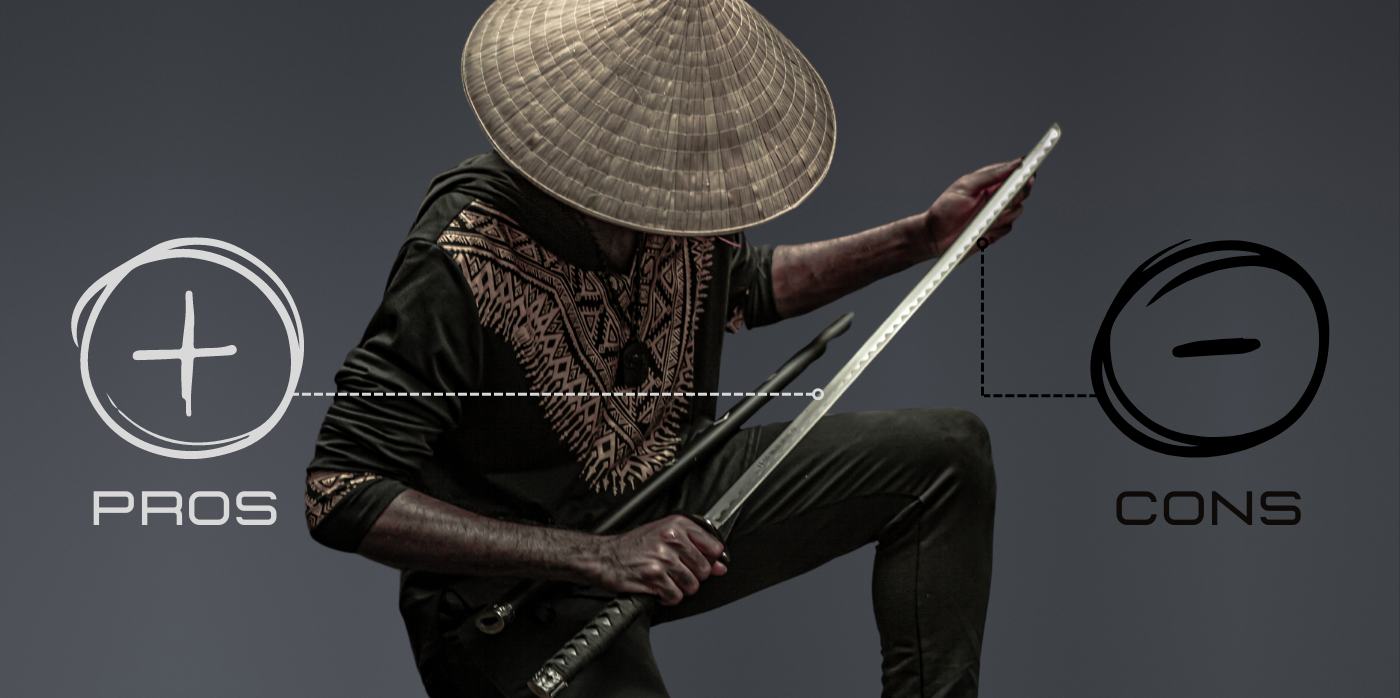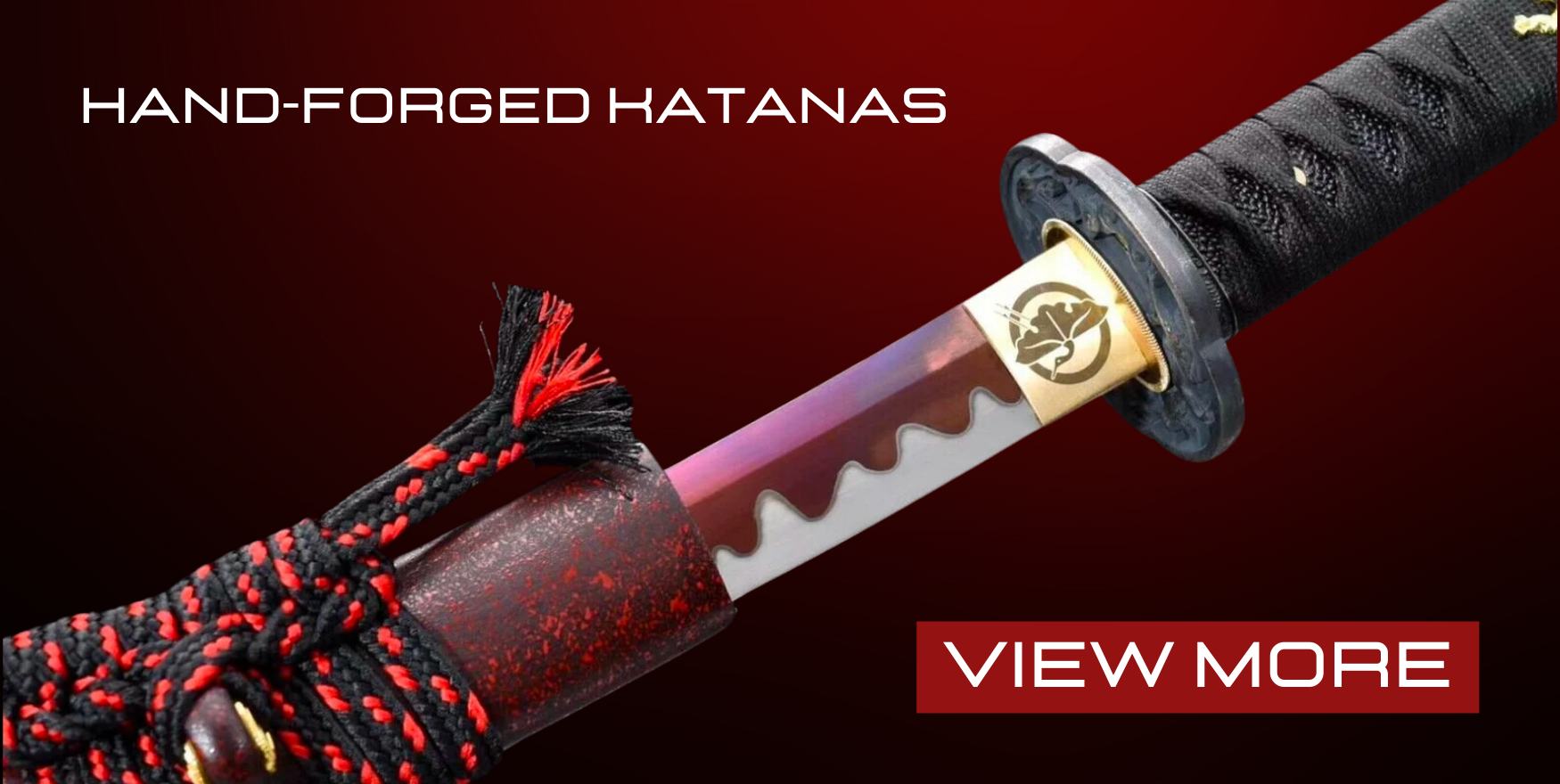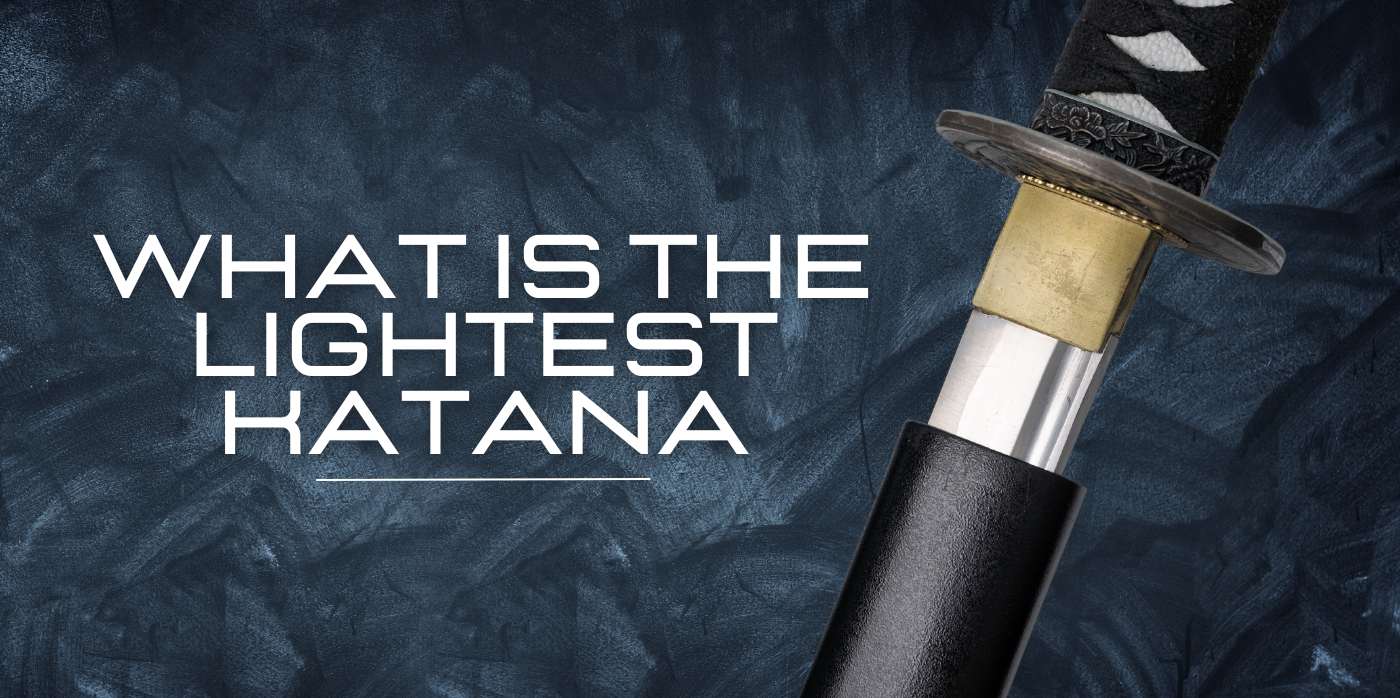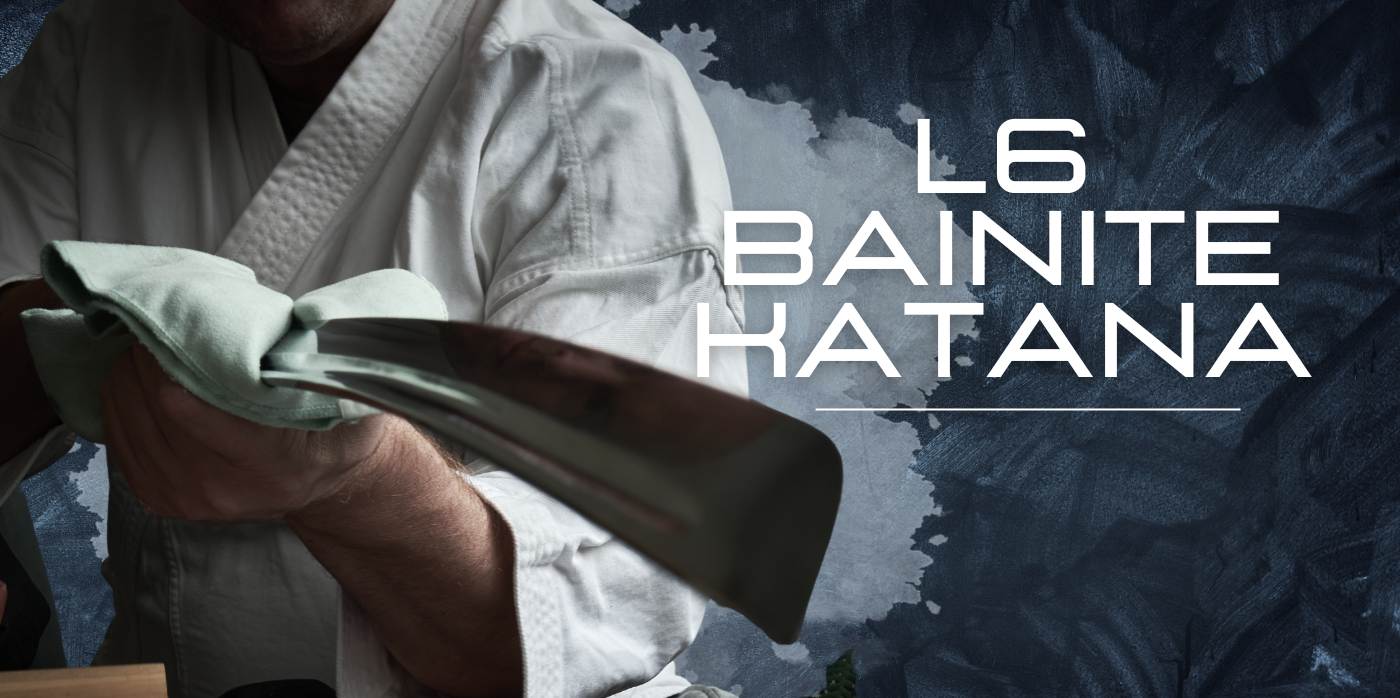The katana is widely considered a remarkable sword, revered for its craftsmanship, effectiveness in battle, and aesthetic appeal. It has stood the test of time as not only a powerful weapon but also a symbol of the samurai culture and Japanese artistry.
Katana Pros and Cons
This table highlights the key advantages and disadvantages of the katana, offering a balanced view of its capabilities and limitations.
| Pros | Cons |
|---|---|
| Superior craftsmanship and quality | Requires regular maintenance to prevent rust |
| Excellent balance and handling | High-quality katanas can be expensive |
| Sharp cutting edge for effective slicing | Not as effective for thrusting compared to some Western swords |
| Iconic design with cultural and historical significance | Steel quality and construction can vary widely |
| Flexible and durable, capable of withstanding combat stress | Limited reach compared to longer European swords |
| Can be used for various cutting techniques | Prone to chipping if used improperly against hard targets |
Katana Advantages
Here are several reasons why the katana is regarded as a good sword:
-
Superior Craftsmanship: The process of creating a katana involves numerous steps that require precision, skill, and a deep understanding of metallurgy. This process, including the folding and forging of high-carbon steel, results in a blade that is both flexible and durable, capable of retaining a sharp edge.
-
Unique Design: The distinctive curve of a katana is designed for efficiency in both drawing the sword and delivering powerful cuts. This design allows for fluid, swift strikes that can be executed with great precision.
-
Cutting Ability: The katana is renowned for its sharpness and cutting power. The edge of the blade, honed to a razor-sharp finish, allows for clean cuts through various materials, demonstrating its effectiveness as a weapon.
-
Balance and Handling: The weight distribution and overall design of the katana make it an exceptionally balanced sword, easy to handle and maneuver. This balance enhances the wielder's ability to use the sword effectively, allowing for quick, agile movements.
-
Adaptability: While primarily designed for slashing and cutting, skilled samurai could use the katana effectively for thrusting and other techniques. Its versatility made it a formidable weapon in various combat scenarios.
-
Durability: Traditional katanas, made from high-quality steel and crafted with meticulous attention to detail, are incredibly durable. With proper maintenance, a katana can last for generations, retaining its beauty and functionality.
Despite its numerous strengths, the effectiveness of a katana, like any sword, also depends on the skill of its wielder. Training and experience are crucial to harnessing the full potential of this iconic weapon. In summary, the katana's combination of effective design, cultural importance, and historical legacy indeed makes it a good, if not exceptional, sword.
Katana Weakness
The katana, a symbol of samurai heritage and Japanese craftsmanship, stands as one of the most iconic swords in history. Renowned for its sharpness, strength, and beauty, the katana is often celebrated in media, literature, and collections worldwide. However, like all weapons, the katana has its set of limitations and weaknesses.
The Composition of the Blade
A key factor in the katana's design is its material. Traditionally made from tamahagane steel, the katana owes much of its strength and flexibility to the meticulous forging process it undergoes. However, this same process introduces some weaknesses:
- Brittleness: While the edge of the katana is razor-sharp, it can also be brittle. The hardening process that creates the hamon (temper line) can make the edge susceptible to chipping or cracking when striking hard objects.
- Corrosion: High carbon steel, essential for forging a sharp blade, is prone to rust. Without proper care and maintenance, including regular polishing and oiling, a katana can deteriorate quickly.
The Design and Structure
The katana's structure, while optimized for cutting and slashing, presents certain challenges:
- Limited Versatility: The katana's curve and single-edged design limit its versatility in combat. Thrusting attacks are not as effective with a katana as with straight, double-edged swords.
- Weight Distribution: The katana's weight is distributed towards the hilt, making it excellent for quick, precise slashes. However, this can also limit the force behind each strike, making it less effective against heavy armor or mounted combat.
The Usage and Technique
The effectiveness of a katana heavily relies on the skill and technique of the wielder. This dependency creates a vulnerability:
- Skill Requirement: Mastery of the katana requires years of dedicated practice. In the hands of an inexperienced user, the sword's effectiveness is significantly diminished.
- Specific Combat Style: The katana thrives in the context of Iaido and Kenjutsu, where practitioners can anticipate and control combat scenarios. In unpredictable battlefields or against unfamiliar weapons, a samurai might find themselves at a disadvantage.
Its weaknesses stem from its composition, design, and the demands it places on its wielder. Despite these vulnerabilities, the katana remains a revered symbol of the samurai spirit, celebrated for its role in Japanese history and its unparalleled artistry. The true strength of the katana lies not just in its physical capabilities, but in its enduring legacy as a work of art and a testament to the skill of its makers.






